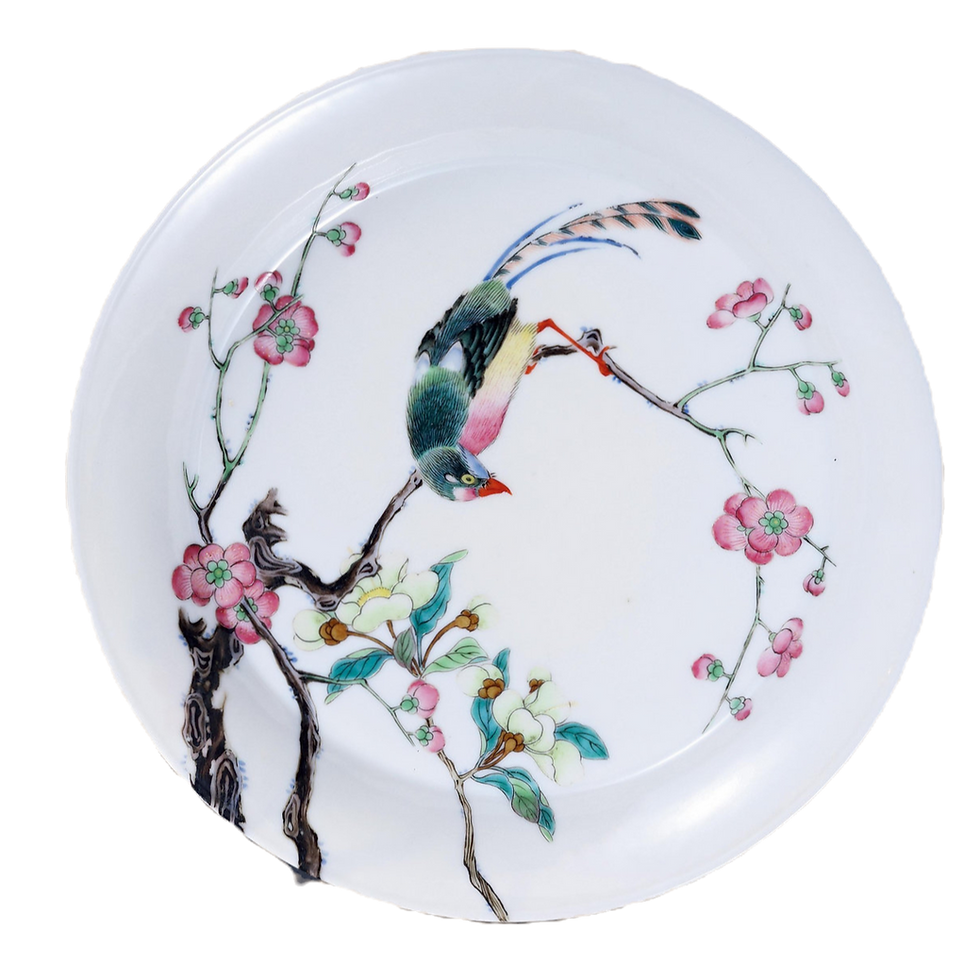Masterpieces on a Plate: A Moon Rabbit Art Appraiser’s Culinary Adventure
- Philippe Smolarski
- Jul 31
- 4 min read
When Art Meets the Plate: Reflections from an Art Historian
Yesterday evening, I had the pleasure—and let's be honest, the privilege—of being invited by a dear friend who owns one of the grandest dining tables in Paris. Not just any table, mind you, but a veritable throne of gastronomy where culinary masterpieces are born, tasted, and adored. The occasion? An exclusive preview of his upcoming August degustation menu. The setting? A symphony of aromas, sights, and, naturally, flavors.
As we savored bite after bite of his latest creations—each dish more inventive and delicious than the last—my friend, a Michelin-starred chef with a twinkle in his eye and a toque perched like a crown, posed a question that stuck to my brain like perfectly roasted duck:
"Is cooking art?"
Ah, the eternal debate! Pull up a chair and a napkin; let's chew on this together.
The Historical Palette: Art Through the Ages
As an art historian and professional appraiser at Moon Rabbit Art, I'm accustomed to dissecting brushstrokes, pottery glazes, and the mystique of antique relics. But cooking? A kitchen is not so different from a studio. The brush becomes a spoon; the canvas, a plate. Both demand creativity, technique, and—if you're lucky—a generous dose of passion.
Historically, many cultures have elevated culinary creation to an art form. Japanese tea ceremonies, with their precise movements and rituals, aren't just about drinking tea—they speak of aesthetic experience and harmony. Renaissance banquets weren't mere feasts; they were theatrical presentations designed to dazzle the senses. Even French royal kitchens transformed cooking into a display of power and artistry, much like any painting hung in Versailles.
Consider Marie-Antoine Carême, that 18th-century genius who literally sculpted architectural pièces montées from sugar. His creations rivaled the monuments of his era, proving that the boundary between decorative art and culinary art was already porous. Or take Giuseppe Arcimboldo and his portraits made entirely from fruits and vegetables—where does art end and edible still life begin?
The Savory Argument: The Chef as Artist
My friend, brandishing his spatula like a conductor's baton in his restaurant kitchen that we were visiting together, made his case as we tasted his latest creation—a dessert that looked like a Jackson Pollock but tasted like a summer orchard:
"Cooking," he declared, "is art because it's ephemeral. You create, you present, and poof! It's gone, consumed by the audience." He's not wrong. A painting hangs on the wall for centuries, but a dish? It's a fleeting masterpiece, devoured in minutes (or seconds, if you're like me with a good crème brûlée).
His mise en place was as meticulous as a painter's palette, his knife techniques rivaled a sculptor's chisel, and his plating? Let's just say I've seen less successful compositions at the Louvre. Each plate told a story—his smoked eel with yuzu gel narrated a tale of East meets West, while his beetroot sorbet was a love letter to the earth itself.
The Counter-Argument: Just Sophisticated Food?
Let's now play devil's advocate (or perhaps devil's food cake). Not every meal is a masterpiece. The soggy sandwich I made last week doesn't deserve to be framed, and I'm certain that my attempt at "rustic" soup would have made Caravaggio weep for all the wrong reasons. Art demands intention, and not every cook is channeling their inner Rembrandt. Some are just trying to get dinner on the table before the kids start a riot.
Yet, even this argument falters when you consider my friend's menu. It wasn't just about feeding the body; it was about nourishing the soul. Like a Baroque painting or a Beethoven symphony, a great dish demands technique, creativity, and a touch of madness.
Culinary Spontaneity: A Living Art
There's a spontaneity in cooking that many visual arts don't possess. Ingredients react unpredictably—a living medium. Artistic expression in the kitchen constantly negotiates between precision and improvisation, chemistry and intuition. It's an art of the moment, where one second too long can transform a perfect soufflé into a deflated disaster.
This ephemeral nature, far from being a weakness, becomes a strength. When you can't own the work, you literally incorporate it. Try doing that with a Monet!
The Moon Rabbit Art Verdict
When my friend asked me "Is cooking art?", I replied with a smile:
"Well, if art is something that overwhelms your senses, tells a story, and leaves you craving more, then yes—your cooking is art. Especially if it doesn't require a museum guard to prevent people from licking the frame."
He laughed, and I realized the truth: art and cuisine overlap beautifully. Both create stories, evoke emotions, and preserve culture. Like a Japanese tea ceremony or a Renaissance banquet, haute cuisine transcends mere subsistence to become a total aesthetic experience.
At the conclusion of this memorable meal, accompanied by coffee that seemed to have been roasted by angels, I concluded that cooking can indeed be art. My friend, with his Michelin-starred confidence, is as much an artist as any sculptor or poet. And if you doubt me, try his truffle risotto—it'll make you see the Sistine Chapel in a spoonful.
A Flavorful Conclusion
At Moon Rabbit Art, we appraise treasures from the past, but we also celebrate the artistry of the present. Whether it's a Qing dynasty vase or a perfectly plated dessert, art is about creating something that moves you.
Next time you savor a dish too beautiful to eat, ask yourself: is this food, or is this a masterpiece? Spoiler alert: it's probably both.
And if you ever come across an old recipe or a kitchen tool in need of a second life? Moon Rabbit Art is here for your antiques and art appraisals—because every piece has a story, whether painted on canvas or simmered in a pot.
Until next time, may your collections be valuable and your meals be masterpieces.




Comments